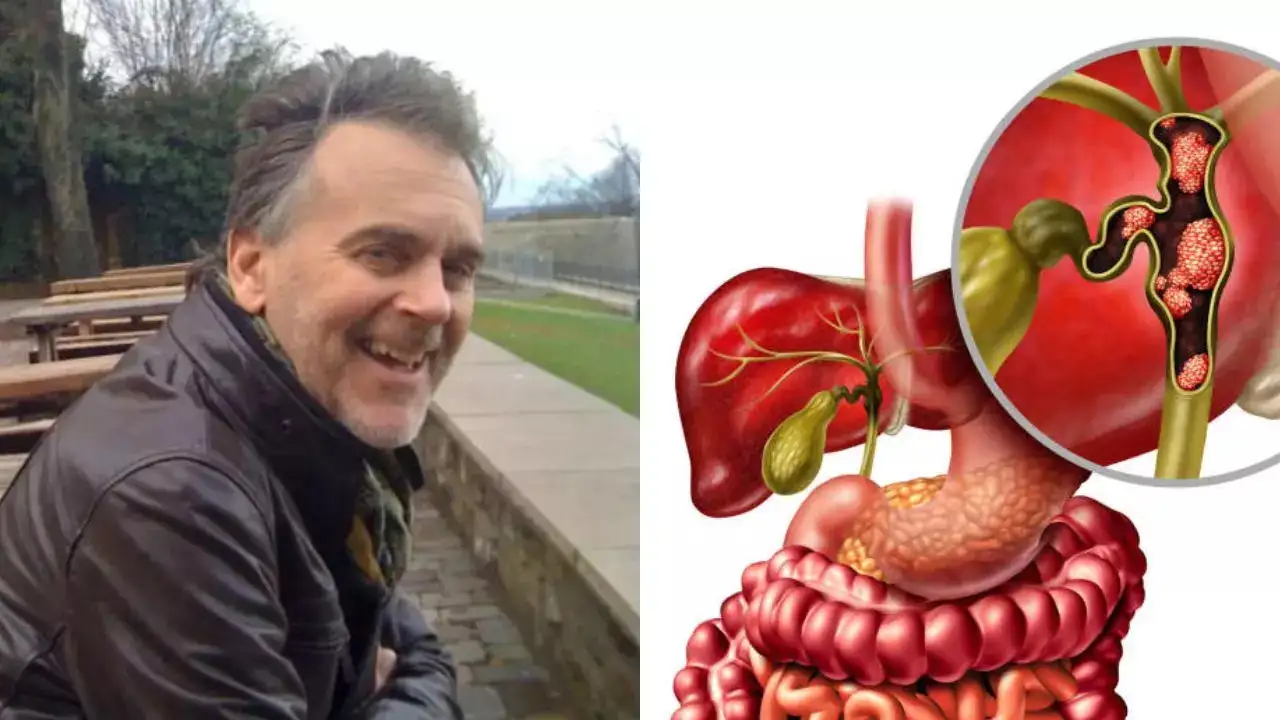
Johnathan was diagnosed with bile duct cancer and passed away just three weeks later at the age of 59 (Pic: The Sun/iStock)
A fit and healthy British lawyer who delayed getting his symptoms checked to seek medical advice died just three weeks after a cancer diagnosis. According to Johnathan Ainsworth’s wife Thelma, he was a runner who was “always slim and always training." However, he started complaining of stomach aches often but, despite a medical career earlier, did not do anything about it.
Later, he was diagnosed with bile duct cancer and passed away just three weeks later, at the age of 59. “Jonathan, even though he was a doctor, he didn’t get checked immediately; he waited until it was too late,” Thelma told The Sun.
According to Thelma, Johnathan had lost a lot of weight, and his persisted—in fact, got worse with time. A scan he got done once showed his liver was inflamed. But later, a blood test led to his shocking bile duct cancer diagnosis. “It turned out to be bile duct cancer, which is very rare, and it had spread everywhere,” said Thelma.
Experts say bile duct cancer does not have too many symptoms and is extremely hard to spot, which was the case for Jonathan. According to Liver Cancer UK, about 2,200 people in the UK are diagnosed with bile duct cancer every year. Thelma said her husband’s symptoms “presented very late,” and they never suspected it could be cancer.
What is bile duct cancer?
Also known as cholangiocarcinoma, bile duct cancer is a rare disease in which malignant cells form in the bile ducts. It is a rare cancer that begins in the bile ducts - thin tubes that bring bile from your liver and gallbladder to your small intestines.
Cholangiocarcinoma spreads fast, and doctors say most people receive a diagnosis after it’s already spread outside of their bile ducts. At this point, the cancer becomes extremely difficult to treat, and the prognosis is usually poor.
What causes bile duct cancer?
While it is not known what exactly causes cholangiocarcinoma, doctors say inflammation in your bile ducts may play an active role. Ongoing damage from inflammation causes changes in cell DNA, which contains instructions that tell cells how to behave. Damaged DNA causes issues with how cells grow and divide, creating tumours that damage tissue. These changes are not inherited but most likely happen during a person’s lifetime.
The risk factors for bile duct cancer include:
- Structural abnormalities where your bile duct and pancreatic duct meet
- Bile duct stones or choledochal cyst disease
- Clonorchiasis
-
Chronic ulcerative colitis
- Cirrhosis of the liver
- Hepatitis B or C
- HIV/AIDS
- Inflammatory bowel disease
- Alcohol use disorder
- Diabetes
- Obesity
- Smoking
Signs and symptoms of Cholangiocarcinoma
According to experts, symptoms of cholangiocarcinoma do not usually start until the cancer advances and blocks a bile duct. A few symptoms include:
- Abdominal pain
- Fever
- Fatigue
- Itchy skin
- Dark urine
- Jaundice
- Light-coloured to greasy stools
- Nausea and vomiting
- Unexplained weight loss
Even though cholangiocarcinoma is not usually painful in the early stages, a large tumour can cause pain that may feel concentrated in the right side of your abdomen, underneath your ribs. For some people, the pain also shifts to other regions in their abdomen or back.
Get Latest News Live on Times Now along with Breaking News and Top Headlines from Health and around the world.


